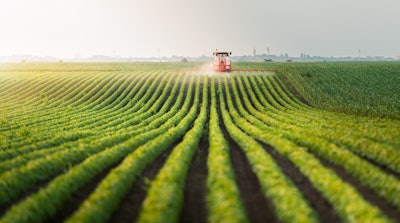
It’s no secret that Hurricane Ian caused quite a bit of damage. Some experts liken the loss to some $60-100 billion in damage across all market sectors.
Like most natural disasters, it wasn’t particular in its path. It destroyed everything from homes to warehouses to roads and bridges.
But one sector completely devastated was agriculture. Crops are like the central nervous system; they’re critical in providing food and ingredients nationwide. Having fields and greenhouses wiped out further cripples an already stressed food supply chain, where food scarcity and food waste continue to run rampant.
Case in point: Hurricane Ian affected nearly 5 million acres of agricultural land, severely impacting growing fields for citrus and vegetables and wiping out $8.12 billion of agricultural products (crops, livestock, aquaculture, etc.), according to the University of Florida Economic Impact Analysis Program. Losses associated with animal operations (beef and dairy cattle, horses, apiculture, aquaculture, etc.) and for producers of animal products (milk, eggs, honey) due to damaged fencing, power outages and flooding equate to about $113-222 million.
Significant losses are also expected for vegetable and melon crops to the tune of $208-393 million. The impacts on these crops are heavily dependent on the ability (or inability) to replant damaged or destroyed crops.
Stored inputs such as fuel for farm equipment, fertilizer and other agricultural chemicals might have been damaged or destroyed, according to preliminary reports, and previously harvested crops that were stored on-farm and not yet sold might now be less valuable.
“Even though the coast – an area with comparatively less agricultural production than inland areas – bore some of the worst impacts of the storm, the strong winds and heavy rains battered a wide swath of the peninsula that includes over 5 million acres of agricultural land,” says Christa Court, director of the program and assistant professor in the UF/IFAS food and resource economics department. “This estimate only accounts for production losses, or changes in expected revenues for the current calendar or market year; citrus, for example, had not yet begun harvesting, and some fall vegetables, like tomatoes and peppers, were already planted.”
“Southwest counties that got hit the hardest by Hurricane Ian have remained in rescue and recovery mode; we anticipate our assessments will not be complete for several weeks,” Court adds. “Our preliminary estimate is a range, a wide range, to account for many of these unknowns. What isn’t destroyed might have diminished yield or quality, which will not be apparent for weeks or months, and then even more effects can appear in the long-term.”
So, what happens next?
For starters, the U.S. Department of Agriculture (USDA) is offering a portfolio of disaster assistance programs.
“Once you are able to safely evaluate the impact on your operation, be sure to contact your local FSA office to timely report all crop, livestock and farm infrastructure damages and losses,” says Deborah Tannenbaum, state executive director for FSA in Florida.
“Crop insurance and other USDA risk management options are there to help producers manage risk because we never know what nature has in store for the future. These program flexibilities allow impacted producers much-needed time to assess agricultural damages and losses while tending to the many competing priorities in their post-hurricane lives,” says Davina Lee, Director of RMA’s Valdosta Regional Office that covers Florida. “The crop insurance companies, loss adjusters and agents are experienced and well trained in handling these types of events.”
Many farmers have already begun rebuilding, working to re-grow crops, fix up their land and repair damages as best as possible before some parts of the United States enter colder weather.
Before the storm, citrus production in Florida was already forecast to drop by one-third compared to the year before, in part because of winter freezes and ongoing disease problems. Now, that figure may have been severely altered depending on how much of the citrus crops were damaged and/or not replaceable.
What’s more, the University of Florida loss estimates do not take into account the impact on consumer prices, but the storm is likely to press prices upward and force orange juice producers to rely even more heavily on California and imported oranges from Latin America. This greatly impacts an industry already challenged by inflation; prices of consumer goods remain elevated across categories, with prices for food at-home rising 1.2% from the end of June to the end of July, and 14.4% year-over-year as of July 31, according to IRI.
Whatever happens next, however the ag sector rebuilds, consumers will continue to pay the price at checkout and will encounter difficulty finding certain produce for the foreseeable future.


















